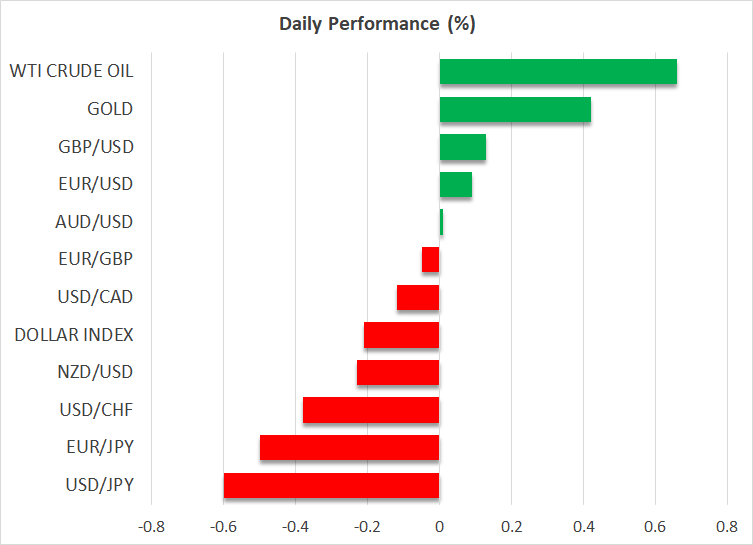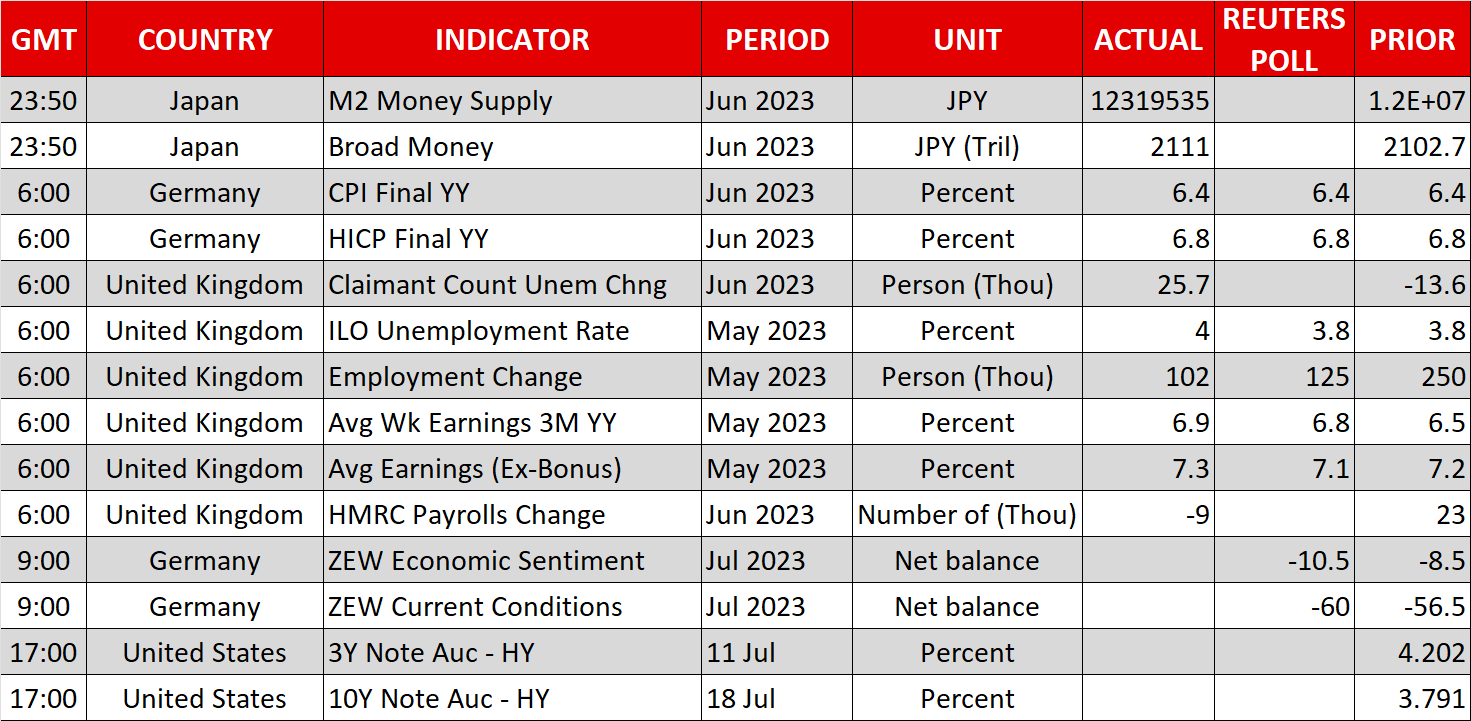- Dollar gets crushed as traders price in a ‘cold’ CPI tomorrow
- Sterling and yen benefit the most, Cable hits 15-month highs
- Gold attempts to exit range to the upside, stocks bounce back

Dollar derailed by falling yields
It’s been a dreadful month for the US dollar so far, even though incoming data releases continue to reaffirm the superiority of the American economy. Economic growth for the second quarter is tracking around 2%, the housing market has staged an impressive recovery, and the labor market is still in great shape.
In contrast, both the European and the Chinese economies seem to be losing steam, haunted by a deepening downturn in the manufacturing sector that has put the brakes on economic growth, and business surveys suggest this rift could widen further as the year unfolds. And yet, the dollar still cannot catch a bid.
The FX market seems to be trading almost entirely on rate differentials these days, overlooking relative economic performance. Confirming as much, the dollar has been smashed lower this week, mirroring a similarly sharp drop in US yields.
Market participants appear to be positioning for a ‘cold’ CPI report tomorrow, in the aftermath of a report that showed used car prices falling further in June and a New York Fed survey that pointed to cooling inflation expectations among consumers. The wild card for the inflation trade is whether rent costs will moderate, as the housing market seems to be heating up instead.
Sterling shines, yen recovers
When the US dollar sinks, that helps to lift all other FX boats. In this case, it is the British pound and the Japanese yen that have enjoyed the most upside. Cable hit its highest levels since April 2022 this week, turbocharged by the dollar’s troubles, the sanguine mood in risk assets, and bets that the Bank of England still has a long road ahead in its tightening campaign.
The yen has been the other star player this week, drawing fuel from a compression in rate differentials as US yields have retreated while Japanese yields edged higher. With Japanese inflation and wages firing up, traders have started to entertain the idea that the Bank of Japan could raise its yield ceiling this month, something reflected in bond markets and the spike in yen implied volatility.
Admittedly, it’s a close call whether the BoJ will take its next tightening step on July 28. Either way, the market might still position for a potential policy shift in the days leading into the BoJ meeting, which sets the stage for some further recovery in the yen over the second half of July.
Gold attacks $1,935, stocks bounce back
Gold prices have taken full advantage of the synchronized retreat in the US dollar and real yields, with the precious metal storming higher to attack the upper boundary of its latest range at $1,935. So far, buyers don’t seem to have enough firepower to pierce above this region in a convincing manner, but if they ultimately prove successful, the spotlight would turn towards $1,975 next.
Finally in the stock market, the S&P 500 closed slightly higher on Monday. Futures are trading almost flat today, remaining oblivious to the seismic moves in bond markets. Still, an element of volatility seems to be creeping back into equities, with the VIX rising somewhat from its post-pandemic lows.
The next big theme for stocks will be the earnings season that will kick into high gear on Friday with the big US banks. Once again, analyst estimates seem overly pessimistic with S&P 500 earnings projected to decline by around 6% - 7% from last year, setting the bar so low that it will probably be easy for most companies to jump over it and deliver positive earnings surprises. 
